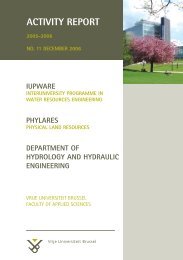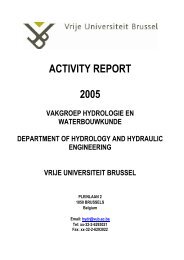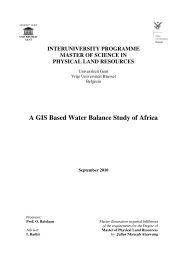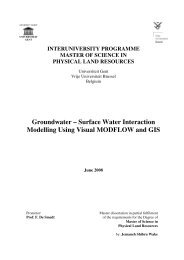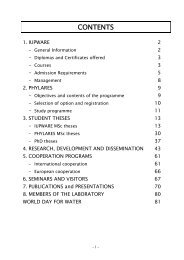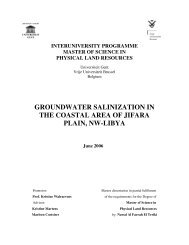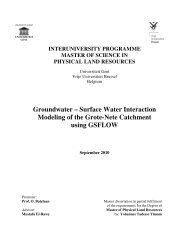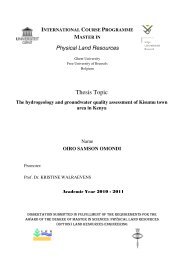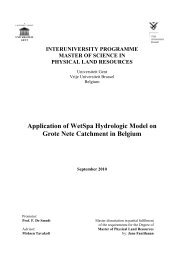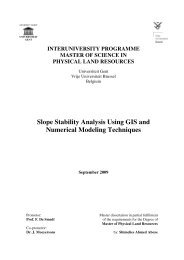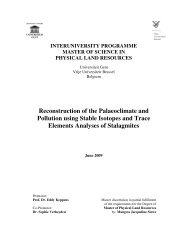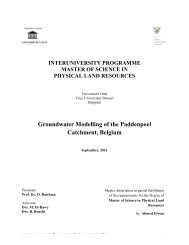GIS-based Environmental Sensitivity Index (ESI) mapping for oil ...
GIS-based Environmental Sensitivity Index (ESI) mapping for oil ...
GIS-based Environmental Sensitivity Index (ESI) mapping for oil ...
- No tags were found...
You also want an ePaper? Increase the reach of your titles
YUMPU automatically turns print PDFs into web optimized ePapers that Google loves.
Results and discussion 79The existence of different kinds of birds and especially those concentrated along beachesmeans added sensitivity of the shoreline but only during the seasons of concentration.Concentration areas of birds are depicted on the map by polygon with attached set of iconsrepresents the type of birds, which could be used by the responder to have at least an ideaabout the resources found there.However, the list of the species must also be consulted to know which species is mostlygoing to be affected by the <strong>oil</strong> and if there is a critical life stage of that species at this time(i.e. nesting). Un<strong>for</strong>tunately these critical life stages were not available while conductingthe present research, which means that the responsible biologist of the defense team needsto seek another sources of in<strong>for</strong>mation about these stages.5.2.2. FishesA complete list of the reported reef-associated fishes obtained from the global in<strong>for</strong>mationsystem called fishbase, which is available through the worldwide web. However thein<strong>for</strong>mation available was only about the species common and scientific names. No moredetailed in<strong>for</strong>mation about fish concentration areas or migration routs could be obtained.This in<strong>for</strong>mation was collected in tables. And the aerial distribution of fishes is noted onthe map as “COMMON IN THE AREA “ with the appropriate icon.5.2.3. Coral reefsThis has been discussed in details in the part of shoreline habitats classification. The aerialdistribution of coral reefs is depicted on the map (Fig. 5-12) with hatched purple polygons.Each polygon is also connected to an icon representative of coral reefs. The polygons thoserepresent the aerial distribution of coral reefs were copied from the map of shorelineproductivity. Areas of shallow coral refs are already taken the highest sensitivity rank.There are many kinds of coral (sources speaks about 100 types) found in red sea and mostof them are observed in the study area and the surrounding regions (some are listed inappendix 2). The existence of such habitats is of course increasing the sensitivity of theplace to <strong>oil</strong> spills and other impacts.5.2.4. Marine mammals (dolphins)<strong>GIS</strong>-Based <strong>Environmental</strong> <strong>Sensitivity</strong> <strong>Index</strong> Mapping <strong>for</strong> <strong>oil</strong> spills - Case study in Sharm El-Sheikh, Egypt.




